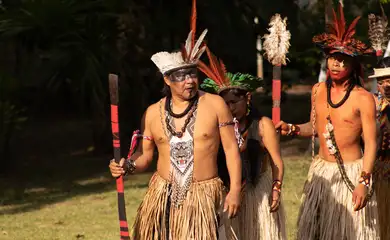Indigenous presence across Brazil mapped in 2022 census

Brazil’s 2022 demographic census has mapped a total of 8,568 indigenous points spread across all Brazilian states. New data from the census were released Thursday (Dec. 19) by the statistics bureau IBGE.

Indigenous points are all places with the permanent settlement of 15 or more indigenous residents, in both urban and rural areas. They include villages, communities, sites, camps, shelters, and other forms of organization.
Amazonas is the state with the largest number of such points—2,571, or 30 percent of the total—followed by Mato Grosso, with 924 (10.78%); Pará, with 869 (10.14%); and Maranhão, with 750 (8.75%).
Of the 8,568 points mapped, 6,130 (71.55%) are located on officially indigenous lands. Another 2,437 (28.44%) are outside these regions.
The figures also includes the distribution of points outside of indigenous territories. Amazonas state once again tops the list, with 1,077. Next are Pernambuco (237), Pará (187), Ceará (159), and Bahia (138).







